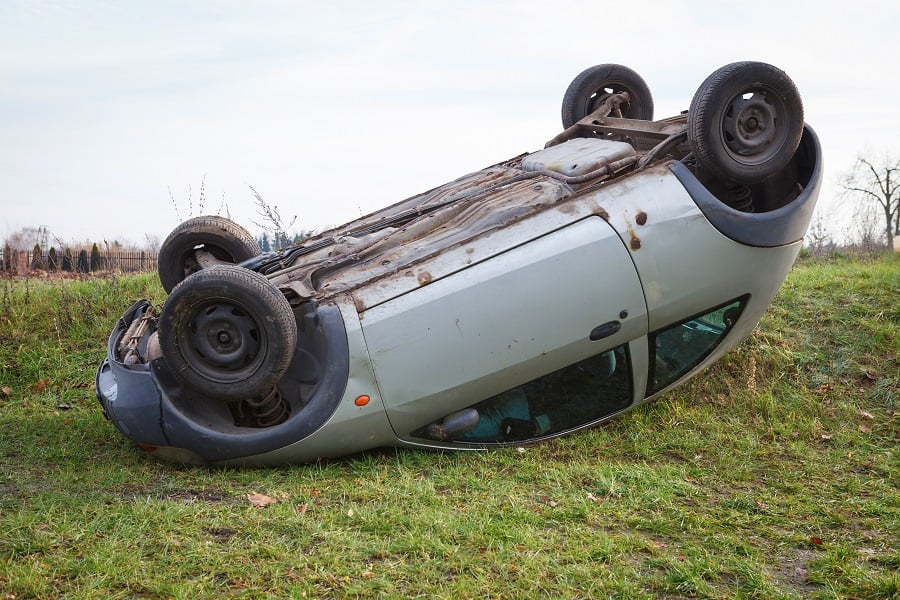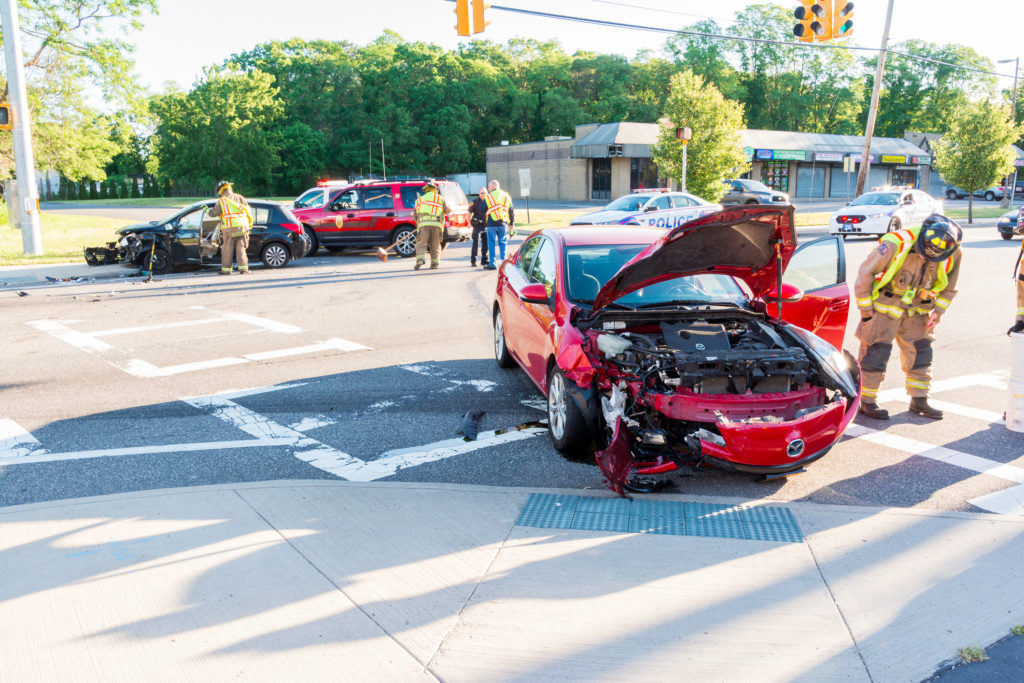When two or more vehicles are involved in an accident with injuries, the place where it occurs gets active quickly, and good judgment gets blurred. Here are some things that you need to do both at the accident scene and long after the mess is cleaned up.
Call the police
Don’t get talked out of calling the police. Without a police accident report, you’re going nowhere with both the insurer of the person who caused the accident and your own insurer. The law requires you to remain at the scene. If you drive off before the police arrive, you can be charged with leaving the scene of an accident. You’ll be able to get a copy of the police accident report a few days later.
Ask for paramedics
You’ve been injured, so you’ll need treatment and documentation of your injuries. That’s what paramedics are for. When you call 911 for police to come to the scene, the dispatcher will ask if you want paramedics too. Tell the dispatcher that you want them. They’ll treat you at the scene and make a record of your injuries. That’s the first record in a long chain of medical records. Insist on being taken to a hospital by paramedics. You’ll get further treatment and diagnostics there.
Notify your insurance company
You have a contractual duty to cooperate with your insurance company, so notify your agent or your insurer’s claims department of the accident right away. Give your insurer your fullest cooperation, but never give the opposing insurer a statement of any kind. It will only try to use that statement against you sometime in the future. Politely refuse to do so, and call the personal injury team of Lamber Goodnow of Fennemore Craig at 602-910-2566 for a free consultation and case evaluation. You can speak with us confidentially. Whatever you say to your own insurer and us is privileged. Nobody else connected with your accident can access anything that we discuss.
Follow all emergency room instructions
Emergency room personnel might refer you to a medical specialist like a neurologist or orthopedist. If indeed you are referred, contact that physician’s office for an appointment. By all means, make sure that you attend that appointment and any other medical appointments in the future. The opposing insurer and its attorneys will be obtaining copies of your medical records. If they see that you missed doctor or therapy appointments, your credibility will come to issue right away. Allegations of faking or malingering will follow. They’ll also attack your credibility if there are gaps in treatment. Avoid those gaps unless your doctor authorizes them.
Don’t mention your accident or condition on social media
One of the first things the insurance adjuster assigned to your file will do is to search for you on social media. If you’re found, that adjuster will want to know everything possible about you. Anything that you say about your accident or condition on social media can be used against you if it’s inconsistent with what you testify to in a deposition or a trial. You don’t want to open yourself to an attack on your credibility. You’re a victim of personal injury, so keep it personal. Many attorneys advise their clients to take a vacation from social media during the pendency of their client’s case. On the subject of vacations, don’t post pictures on social media of you on a beach or in a club in Cancun while you’re supposed to be recovering. It’s easy for the opposing insurer or attorney to argue that you’re healthy enough to go on vacation but not back to work.
See the Lamber Goodnow personal injury team at Fennemore Craig as soon as possible after being injured in any motor vehicle accident. It won’t cost you a penny. The sooner that you see us, the sooner we might be able to resolve your injury claim. Our practice focuses on personal injury and wrongful death claims arising from car, truck, motorcycle, bicycle and pedestrian accidents. Since we represent clients in these types of cases on a contingency fee basis, no legal fees are due until such time as we obtain a settlement or verdict on your behalf. There’s no reason not to see us after being injured through the fault of somebody else.
What To Do After a Rollover Accident?

Rollover accidents are often more legally complicated than other types of motor vehicle accidents. This is partly because they tend to be severe: Just 2 percent of the nearly 9.1 million vehicle crashes in 2010 were rollover accidents. Yet they accounted for nearly 35 percent of all deaths from vehicle crashes. Rollover accidents are also sometimes caused by manufacturing defects in the vehicle or tires and therefore may prompt a product liability lawsuit.
Here’s what you need to consider if you have been involved in a rollover.
Causes of rollover crashes
• According to the National Highway Traffic Safety Administration (NHTSA), about 95 percent of rollover accidents involving one vehicle are caused by “tripping.” This occurs when a vehicle strikes a curb or guardrail and flips over. It can also happen when a vehicle slides off the roadway into soft soil and the driver attempts to turn back onto the road too quickly.
• More rare are untripped rollovers, which can occur during high-speed collision avoidance maneuvers, especially on slick roads.
• Vehicles with high centers of gravity – such as SUVs, minivans and full-sized vans – are more prone to rollover crashes.
• Tire defects or blowouts also commonly contribute to rollovers.
• Hazardous conditions due to weather, construction, or a poorly maintained road are also often involved.
A rollover accident can become catastrophic if someone is ejected from the vehicle or if the roof collapses. The federal government has mandated improvements in electronic stability control systems, which may reduce the risk of getting into a rollover, as well as improvements in roll cage standards, which may help prevent severe head injuries. But not all vehicles have these upgrades.
Q: Who is Liable in rollover accidents?
A: If you have been involved in a rollover accident, your injuries may be severe. This means your medical bills will be extremely high. The physical therapy necessary to recover may last months or years. And you may lose wages as a result of your accident. You may be able to file a lawsuit to recover these damages.
Here are some instances for which it may be appropriate to sue:
- The road was poorly maintained, causing potholes, sinkholes, or other hazards.
- Construction was inadequately marked or left the road in poor condition.
- A tire was defective.
- You were not adequately warned about vehicle or tire defects.
- The vehicle was not equipped with adequate roll bars or roll cages to keep the roof stable during a rollover, causing your injuries to be worse than they might have been.
- The side or front air bags failed to deploy because of a manufacturing defect, causing you to suffer more severe injuries.
- Another driver caused the accident due to negligence. The driver may have been texting, driving under the influence of drugs or alcohol, or recklessly speeding and swerving.
Q: Should I file a lawsuit after a rollover?
A: In the case of poor road conditions, you may sue the city, state or contractor in charge. (Note that if you are suing a public entity over road conditions, you may have a very short window in which to file the case.)
In a product liability case, you would likely sue the manufacturer. These cases can be complex. Large manufacturers and product distributors can typically afford strong legal representation. It is wise in product liability cases to consult with an expert attorney. Your lawyer will collaborate with expert witnesses to determine the nature of the product defects and the reasons for product recalls.
If another driver was at fault, you would file a lawsuit against the other driver. You may also sue some combination of the above, depending on the circumstances of the crash. For example, if a distracted driver caused you to swerve off the road, where you encountered poor road conditions and the vehicle flipped due to poor design, you may need to seek compensation from multiple people and entities.
Q: What to do after a rollover?
A: A rollover crash is often so severe you may not be able to take some of the recommended steps following an accident.
- Definitely seek medical attention as soon as possible, even if you don’t immediately feel you need it. Pain can be masked by shock and adrenaline. If you wait until injuries surface later on, these injuries probably won’t be accounted for in your claim.
- Call the police and give them your account of what happened. Be completely honest and state only the facts.
- Consult with an experienced personal injury attorney before discussing the case with the other driver’s insurance company. All initial consultations with the Lamber-Goodnow Injury Law Team are complimentary, and the firm only gets paid if you get paid.
Is a Car Making a Left Turn Always at Fault in an Accident?

The driver of a vehicle who makes an illegal left-hand turn is typically found to be at fault because laws mandate that left-turning turning drivers must yield to oncoming traffic, who have the right of way under the law.
All circumstances are different.
Give our office a call for a free consultation: 602-428-7195
When a police officer arrives on the scene of a left-turn collision, he or she will almost always give a ticket to the driver who was turning left. Due to right-of-way laws, the left-turning driver is to blame for an accident that occurs during the turn in almost every occurrence. It’s very rare to find the other driver at fault for this type of accident, and it’s even more difficult to prove.
Here’s what you need to know about how fault is determined and what you should do if you’re involved in a left-turn collision – whether you were making the left turn or driving straight.
Q: What is the law of the left turn?
A: A driver making a left turn has the right of way only if he or she is proceeding on a left-turn green arrow. Otherwise, a driver who is preparing to make a left turn at a green light must wait until oncoming traffic is nonexistent or far enough away to allow for a safe, complete turn. Left-turn drivers must also wait for pedestrians and cyclists to safely cross through the crosswalk or street.
If the driver is making a left turn anywhere a light is not present, he or she must take the same precautions. Oncoming traffic has the right of way and is not required to stop or slow down to allow the driver to make the turn, whether it’s at a stop light or not. This is why the left-turn driver is almost always automatically deemed at fault.
Q: What is the exceptions to the left turn general rule?
A: There are limited but not uncommon exceptions to the left-turn liability rule of thumb. The left-turn driver may be deemed not at fault or only partially at fault in the following scenarios:
- The vehicle going straight was driving significantly over the speed limit. This can be difficult to establish as the left-turn driver or witnesses can only guesstimate the oncoming driver’s speed, and the oncoming driver may not be aware of or willing to admit how fast he or she was driving.
- The car driving straight did not stop for a red light or a stop sign. This is easier to prove since witnesses can testify that the driver ran a red light or stop sign. Sometimes traffic cameras at stoplights can record this evidence as well.
- The driver making a left turn initiated the turn while it was safe to proceed, but some unexpected circumstance occurred during the turn that made it necessary for the driver to slow, stop or swerve.
Other circumstances may influence the determination of the other driver’s fault. For example, if the driver proceeding straight was under the influence of alcohol or drugs, was distracted by texting or other cell phone use, or did not have a valid driver’s license at the time of the collision, he or she may be deemed at least partially at fault.
Q: What to do if you’ve been involved in a left-turn collision?
A: If you’re involved in a left-turn accident and you were the car turning left but believe you were not at fault, you are going to find it difficult to prove the other driver caused the accident. The help of a personal injury auto accident attorney will prove valuable to you during this time. The Lamber Goodnow Injury Law Team offers free consultations in the event of an auto accident. We work to put together the evidence, recreate the scene of the accident, go over witness reports, and help prove the other driver did not obey the law and caused your accident. We only get paid if you get paid.
If you are the driver of the car going straight and the other driver is blaming you for the accident, you’ll need an attorney to prove you did nothing wrong. It’s easier to prove the left-turn driver was at fault for an accident, but legal representation is helpful in a case where the other driver is denying their fault. This can cause insurance issues, and you might be stuck paying your medical bills out-of-pocket. You can contact the Lamber-Goodnow team to schedule a free consultation and to discuss your legal rights.
If you live in a “pure comparative fault” or “pure comparative negligence” state, such as Arizona, you can receive compensation based on the degree you were at fault in a collision. For example, if 20 percent of the accident is your fault, you can receive 80 percent compensation on things like injuries and property damage.
Whether you were the driver turning left or going straight, you’ll need to take several steps to gather evidence at the scene of the collision, file the proper reports, and seek medical care. Review the step-by-step procedure for what to do after an accident here. You can also review our frequently asked questions about personal injury cases here.


